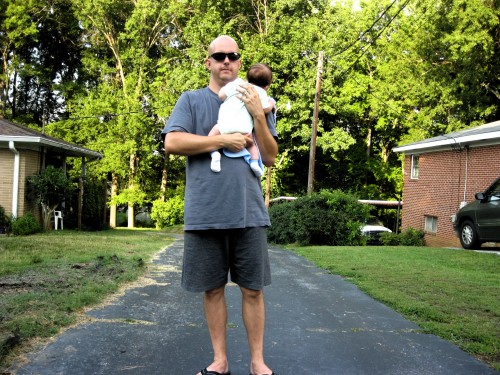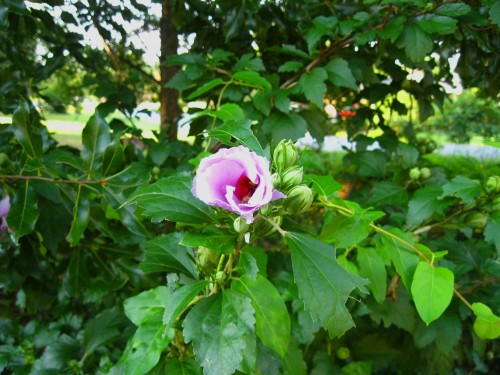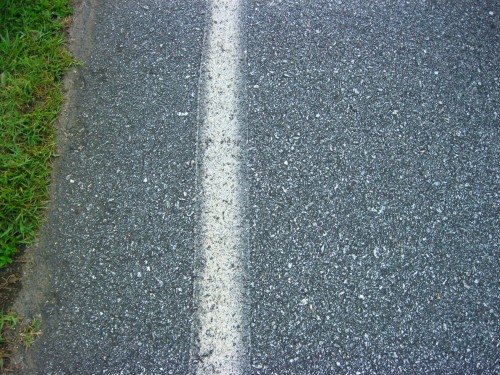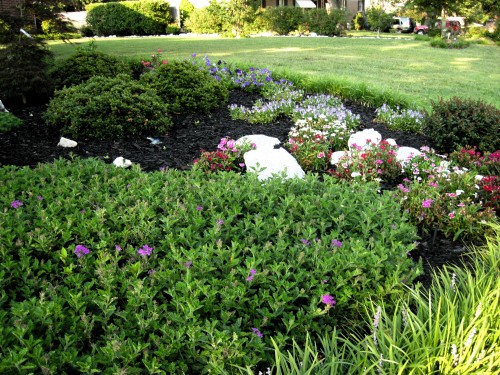After the Boy’s six o’clock feeding, nothing soothes his nerves (and K’s) like a walk. Without K. Or the Girl. So the three of us head out alone, I with the Boy, the Girl with our little point and shoot camera.
It’s a fairly standard route we take. Usually, the only question is direction, and in the late afternoon, the sun dictates counter-clockwise. And so we begin with the mysterious flowers that have been blooming for a week now and the daily request: “Daddy, can I pick a flower?” The bush hangs over an embankment, with thorns and danger swirling around it.
“How about a picture?” I suggest.
“Okay,” she chirps, then explains that today, she’s going to focus on pictures of nature.
Yet when we get home, we see that there was another motif that crept its way steadily into the eighty-some pictures she snapped along the half-hour walk: the road.
Endless pictures of the road. The road and the grass beside; the road and our feet; the road and her foot; the road with crumbling asphalt; the road with new asphalt; the road without lines; the road with lines.
“Why so many pictures of the road?” I want to ask, but I know the answer. “I don’t know.”
I remember taking pictures that way: not really sure why I was taking that particular picture, but somehow certain that the photo would reveal something not immediately observable in reality.
After all, isn’t that the motivation behind most modern art? If Marcel Duchamp can display a signed urinal as modern art, isn’t a food processor on the side of the road at least as deserving of artistic attention?
Surely, at the very least, a dog’s urinal is art.






